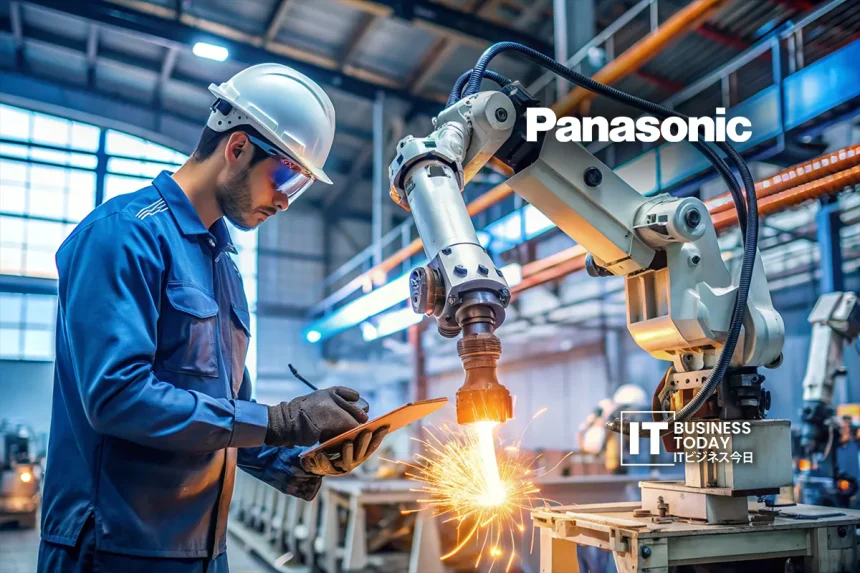Panasonic Holdings DX & CPS Headquarters Digital & AI Technology Center will begin working on “Gemba CPS 2.0” from FY2025. By utilizing AI agents and other technologies, the concept of the conventional “Gemba CPS 1.0” will be significantly evolved, and the aim will be to improve the efficiency and quality of labor, mainly at the manufacturing site. In conventional manufacturing sites, people would apply production plans to the site based on instruction information from the core system and utilize their personal know-how, and work would proceed accordingly. Panasonic Holdings has proposed a cyber-physical system (CPS) solution based on the concept of “Gemba CPS 1.0” with the aim of solving this problem. It is said that the solution has already been introduced at 116 sites, both inside and outside the company, through Panasonic Connect. With the on-site CPS 1.0, the aim is to streamline the on-site to the ultimate extent, and to build a site that can flexibly respond to market changes. It aims to improve the on-site in four ways: “visualization of the flow of people and goods on-site,” “compliance with plans through work standardization and leveling,” “optimization of management resources through collaboration with aerial systems such as Blue Yonder, SAP, and Oracle,” and “reconstruction of processes to maximize profits.”
By utilizing the on-site CPS kit, cameras and sensors are placed on the manufacturing site. These devices can be placed in a few hours, so data to grasp the flow of people and goods can be collected immediately, and on-site visualization can be advanced in just one day. The on-site CPS kit takes pictures of the site, and based on that data, ultra-fast AI learning using high performance computing (HPC) via the cloud, ultra-light camera AI technology, and ultra-precise probability models are used to analyze operation results in real time. It is possible to visualize on-site waste by visualizing it on a dashboard, and based on the visualized on-site data, a management strategy is proposed by planning and organization simulation using a mathematical model. CPS can complement personal responses and support on-site digitalization. “With other companies’ solutions, it takes about one month to utilize AI, but with the on-site CPS kit, we can visualize everything on-site in one day. One PC can manage 20 cameras and cover an area of 500 square meters, which significantly reduces installation costs. We can advance on-site visualization and on-site optimization, and move away from self-improvement by humans.” He also mentioned the management effects of CPS solutions with on-site CPS 1.0, saying that in the assembly process at the company’s in-house factory, work efficiency improved by 17%, and productivity per person increased by 1.5 times.
At another in-house factory, the operating rate in the implementation process improved by 14%, and by reducing work-in-progress inventory, the company achieved a cash flow improvement of 150 million yen. Furthermore, in the source and assembly process at another in-house factory, the improvement in manufacturing efficiency contributed to an annual increase in sales of 200 million yen and reduced planning time by 85%. Based on these experiences, the company has been working on “on-site CPS 2.0” since fiscal 2025. The vision of Gemba CPS2.0 is to “support people and the workplace, innovate the quality of working time, and dramatically improve productivity and creativity,” and the mission is to “achieve optimization of working time and accelerate value creation through next-generation CPS that responds flexibly and quickly to change.” CPS2.0 reviews business processes from the design stage and promotes the use of AI While Gemba CPS1.0 focused on standardization and “kaizen” at the workplace, Gemba CPS2.0 focuses on reviewing business processes from the design stage and further promotes the use of AI. Previously, visualization was limited to some processes such as assembly and mounting, but it will also begin to link processes and link data between the design department and the manufacturing site. “There is a limit to how much efficiency can be achieved through optimization and automation alone.
Also Read: Monolyst Raises ¥300M to Modernize Manufacturing Sales
By going back to the design and promoting standardization, optimization, and automation of the entire process, it will be possible to reconstruct business processes beyond kaizen and achieve true efficiency,” he said. Using design data as well as actual data, the system uses on-site AI simulation to trace processes back to the design, standardizing and optimizing the entire site. In addition, the system uses on-site adaptive agents to eliminate gaps in the site, leading to operational innovation and automating the site where humans and robots coexist. The on-site adaptive agents are equipped with specialized AI agents for kaizen, planning, maintenance, safety, abnormalities, costs, and job satisfaction. Agents can be combined and used according to the characteristics of each site. For example, when a problem occurs during the mounting process and the equipment stops, the AI determines that a person has rushed to the stopped equipment based on camera footage. At the same time, the work estimation agent and the cause estimation agent identify the part that caused the problem. When it is determined that an error has occurred in the suction of lifting parts, the countermeasure agent proposes multiple countermeasures based on the accumulated data of past trouble occurrences, and the worker can make a decision there or solve the problem on-site based on the work instructions. “Even personnel with low proficiency will be able to respond on-site,” it is said. In addition, the on-site CPS2.In 2018, Panasonic will also step into the field of safety management. Based on the Panasonic Group’s key initiatives and on-site issues, the company will provide a “workplace accident prevention support tool” that supports autonomous on-site safety activities, and will support safe and secure operations by visualizing, analyzing, and providing feedback on risks. Here, the company will provide a “24-hour danger detection/safety risk visualization solution.” The company will automatically determine the implementation of safe work procedures from camera images and visualize safety risks 24 hours a day. If a danger is confirmed, the company will notify managers and workers, and support accident prevention activities by reconfirming safe work procedures, carrying out kaizen activities, and providing individual education. “In crane work, the company will determine from images whether dangerous objects such as heavy objects and metal coils are close to the worker, and use this information for risk identification and safety activities.
In addition, in cases where there is a lot of forward bending work, there is concern about the burden on the lower back, so the company will encourage improvements in work methods. By notifying workers, the company will be able to make autonomous work improvements,” the company said. On the other hand, they also revealed that they are developing an AI that detects microaggressions (non-malicious attacks) from one-on-one conversation records between on-site managers and on-site workers and provides feedback and advice. Called “Self-Care AI,” it analyzes conversation records and, while respecting the intention of the remark, gives advice based on the social background on why the expression could be a microaggression. In addition, it is possible to understand the analysis results more deeply through dialogue with the AI. “It points out unintentional gender bias (preconceptions about the gender of male/female) and discrimination against foreigners, gives awareness of how to convey consideration and concern without misunderstanding, and makes concrete suggestions on how to put it into practice. It can be supportive for managers who are caught between being busy and promoting DEI (diversity, equity, and inclusion).” The AI was developed based on data on DEI promotion accumulated by the Panasonic Group, and when Self-Care AI was used in in-house DEI training, 90% of participants said that it was useful for understanding. Panasonic Holdings stated, “We will leverage our track record in manufacturing sites to expand to a variety of workplaces. The situation on-site will be digitized and interpreted by AI to support operational improvements and updates to people’s working styles.” They also stated, “Part of On-site CPS 2.0 will be commercialized from fiscal 2025 onwards, in collaboration with Panasonic Connect. We will also further deepen our collaboration with Blue Yonder.”
SOURCE: Yahoo







